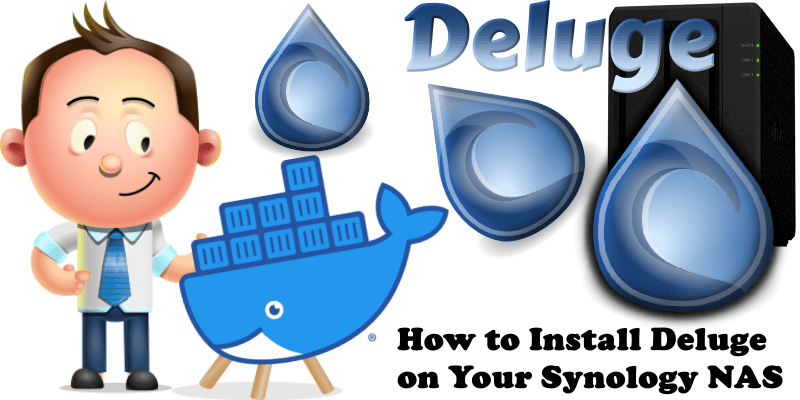
Deluge is a fully-featured cross-platform BitTorrent client. It is Free Software, licensed under the GNU GPLv3+ and adheres to freedesktop standards enabling it to work across many desktop environments. Deluge contains the common features to BitTorrent clients such as Protocol Encryption, DHT, Local Peer Discovery (LSD), Peer Exchange (PEX), UPnP, NAT-PMP, Proxy support, Web seeds, global and per-torrent speed limits. In this step by step guide I will show you how to install Deluge on your Synology NAS using Docker.
STEP 1
Please Support My work by Making a Donation.
STEP 2
Install Container Manager via Synology “Package Center”. If you run an older DSM version (under 7.2), search for Docker instead of Container Manager.
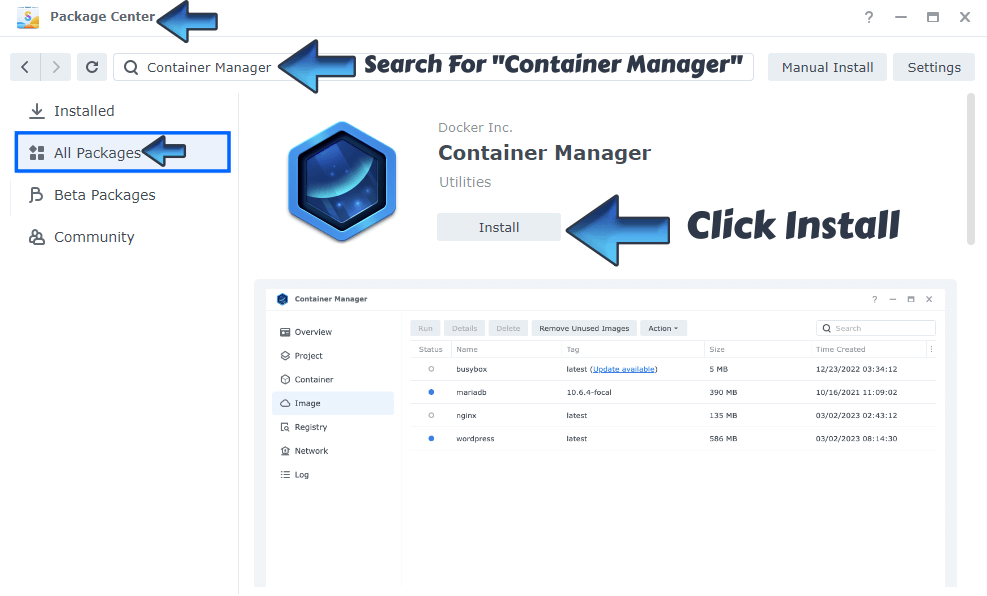
STEP 3
Go to File Station and open the docker folder. Inside the docker folder, create one new folder and name it deluge. Follow the instructions in the image below.
Note: Be careful to enter only lowercase, not uppercase letters.
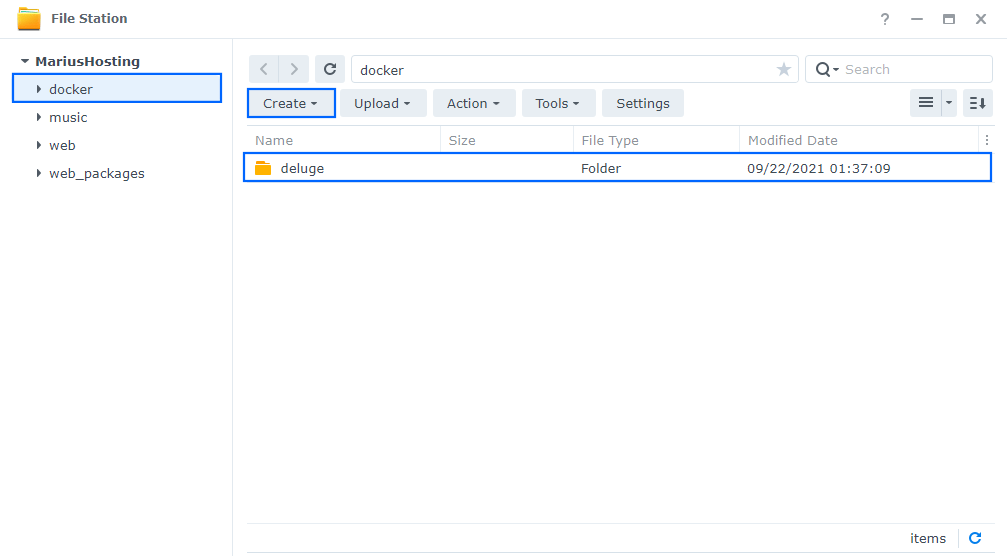
STEP 4
Go to Control Panel / Task Scheduler / Create / Scheduled Task / User-defined script. Follow the instructions in the images below.
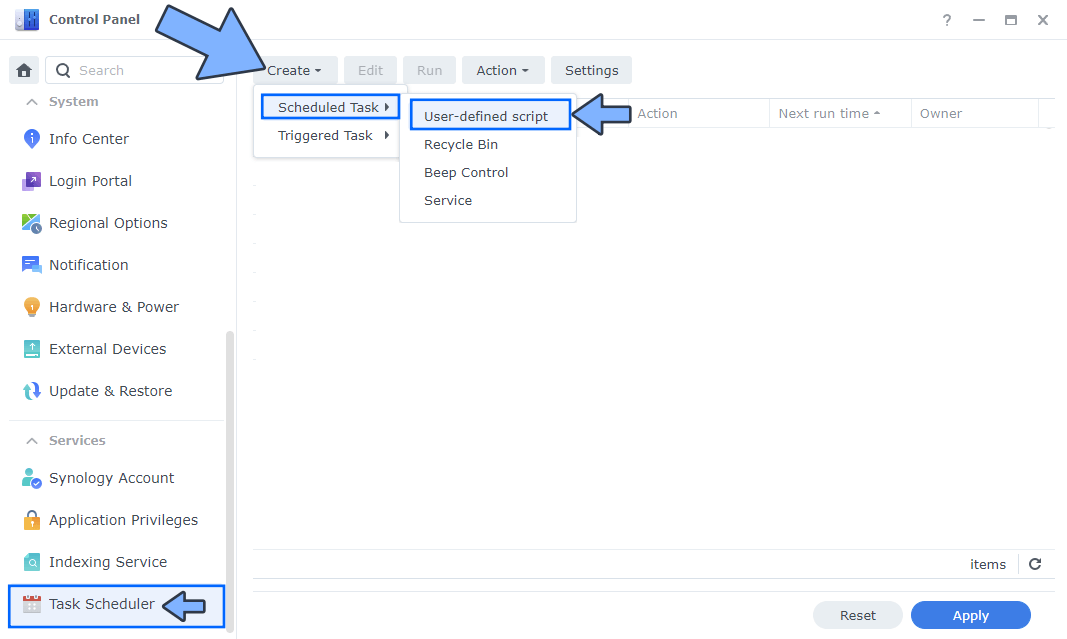
STEP 5
Once you click on User-defined script a new window will open. Follow the instructions below:
- General: In the Task field type in Install Deluge. Uncheck “Enabled” option. Select root User.
- Schedule: Select Run on the following date then select “Do not repeat“.
- Task Settings: Check “Send run details by email“, add your email then copy paste the code below in the Run command area. After that click OK.
docker run -d --name=deluge \ -p 8112:8112 \ -p 6881:6881 \ -p 6881:6881/udp \ -e PUID=1026 \ -e PGID=100 \ -e TZ=Europe/Bucharest \ -v /volume1/docker/deluge:/config \ -v /volume1/web/downloads:/downloads \ --restart always \ ghcr.io/linuxserver/deluge
Note: Before you paste the code above in the Run command area below, change the value numbers for PUID and PGID with your own values. (Follow my step by step guide on how to do this.)
Note: Before you paste the code above in the Run command area below, change the value for TZ (Select your current Time Zone from this list).
Note: in the code above after -v /volume1/docker/deluge:/config \ you have to add your personal path to downloads. For example I have used my personal downloads path folder -v /volume1/web/downloads:/downloads \ Change it according to your preferences. -v /path/toyour/downloads:/downloads \

STEP 6
After you click OK on STEP 5 a new warning pop up window will open. Click OK.
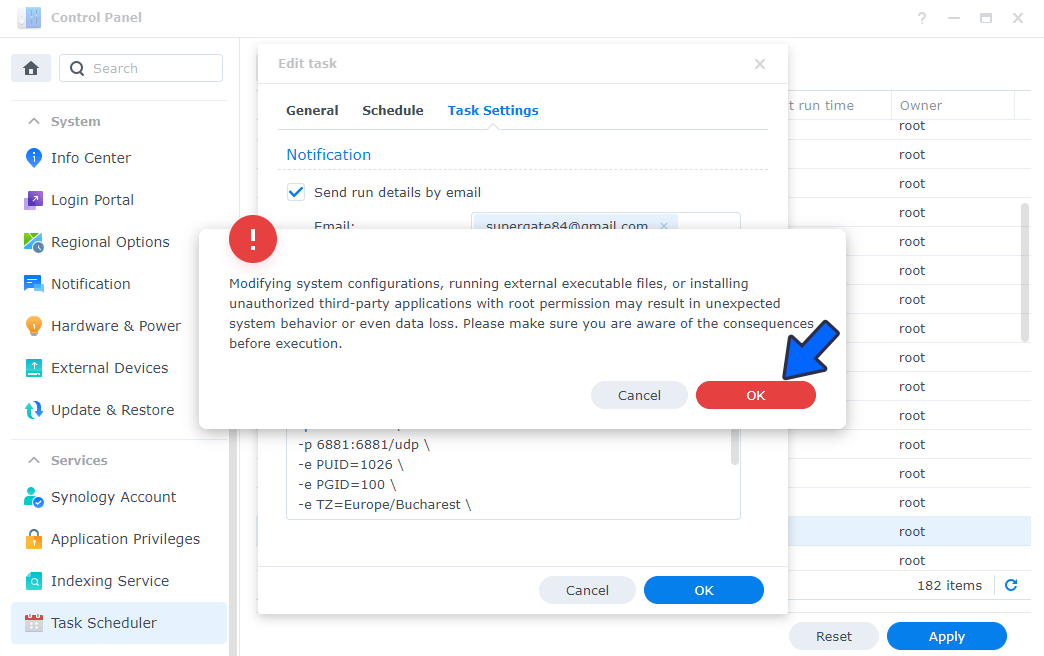
After you click OK, type in your DSM Password then click Submit. Follow the instructions in the image below.

STEP 7
After you click Submit on STEP 6, select your “Install Deluge” Task then click the “Run” tab. You will be asked to run Install Deluge – click OK. Follow the instructions in the image below.

STEP 8
🟢Please Support My work by Making a Donation. Almost 99,9% of the people that install something using my guides forget to support my work, or just ignore STEP 1. I’ve been very honest about this aspect of my work since the beginning: I don’t run any ADS, I don’t require subscriptions, paid or otherwise, I don’t collect IPs, emails, and I don’t have any referral links from Amazon or other merchants. I also don’t have any POP-UPs or COOKIES. I have repeatedly been told over the years how much I have contributed to the community. It’s something I love doing and have been honest about my passion since the beginning. But I also Need The Community to Support me Back to be able to continue doing this work.
STEP 9
The installation process can take up to a few seconds/minutes. It will depend on your Internet speed connection. Now open your browser and type in http://Synology-ip-address:8112 type in the default password. Click Login. Follow the instructions in the images below.
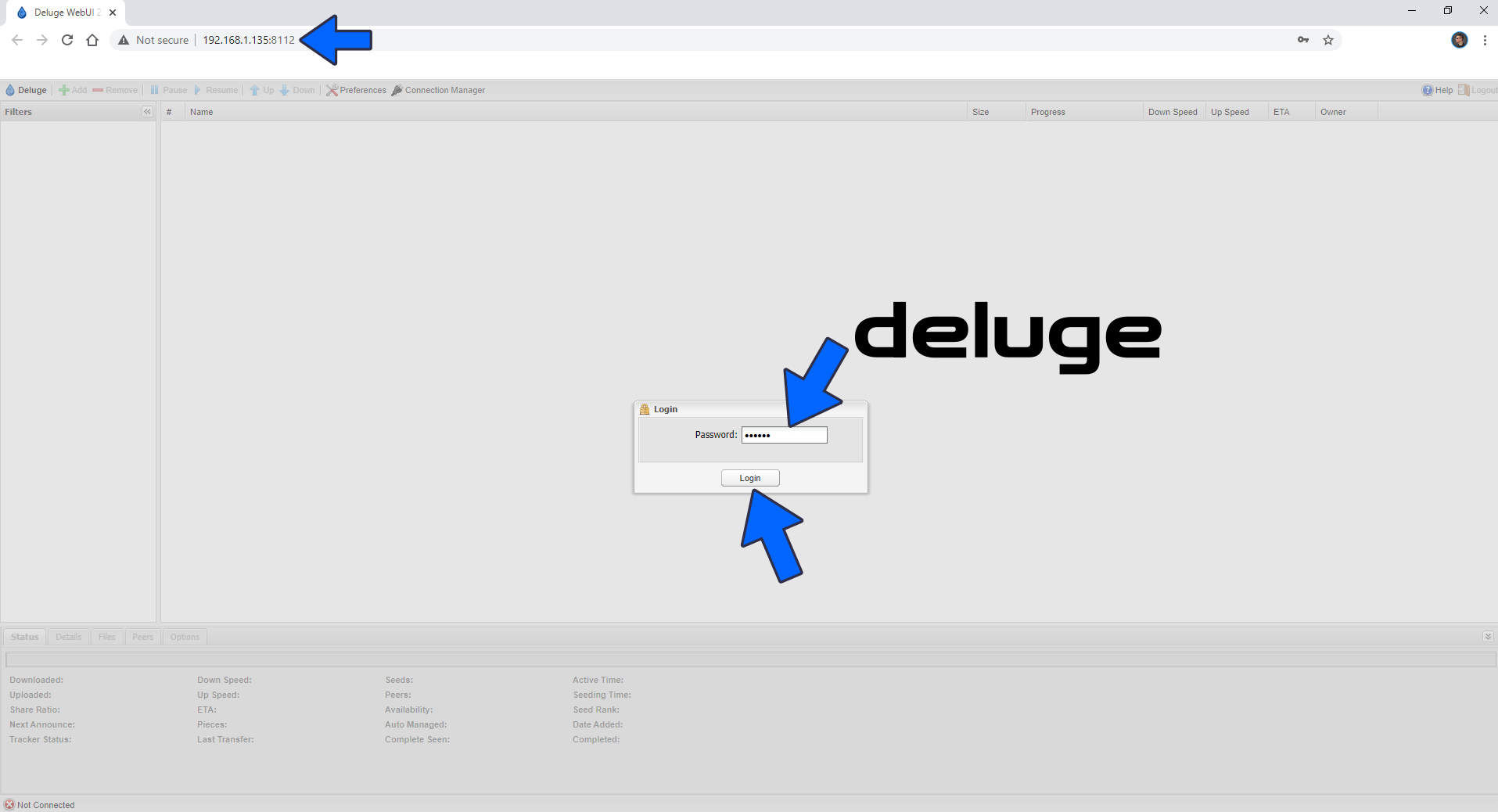
STEP 10
You will be prompted to change the current password with your own password. Go to Preferences / Interface. Change the current password with your own password. Click Apply. Follow the instructions in the image below.
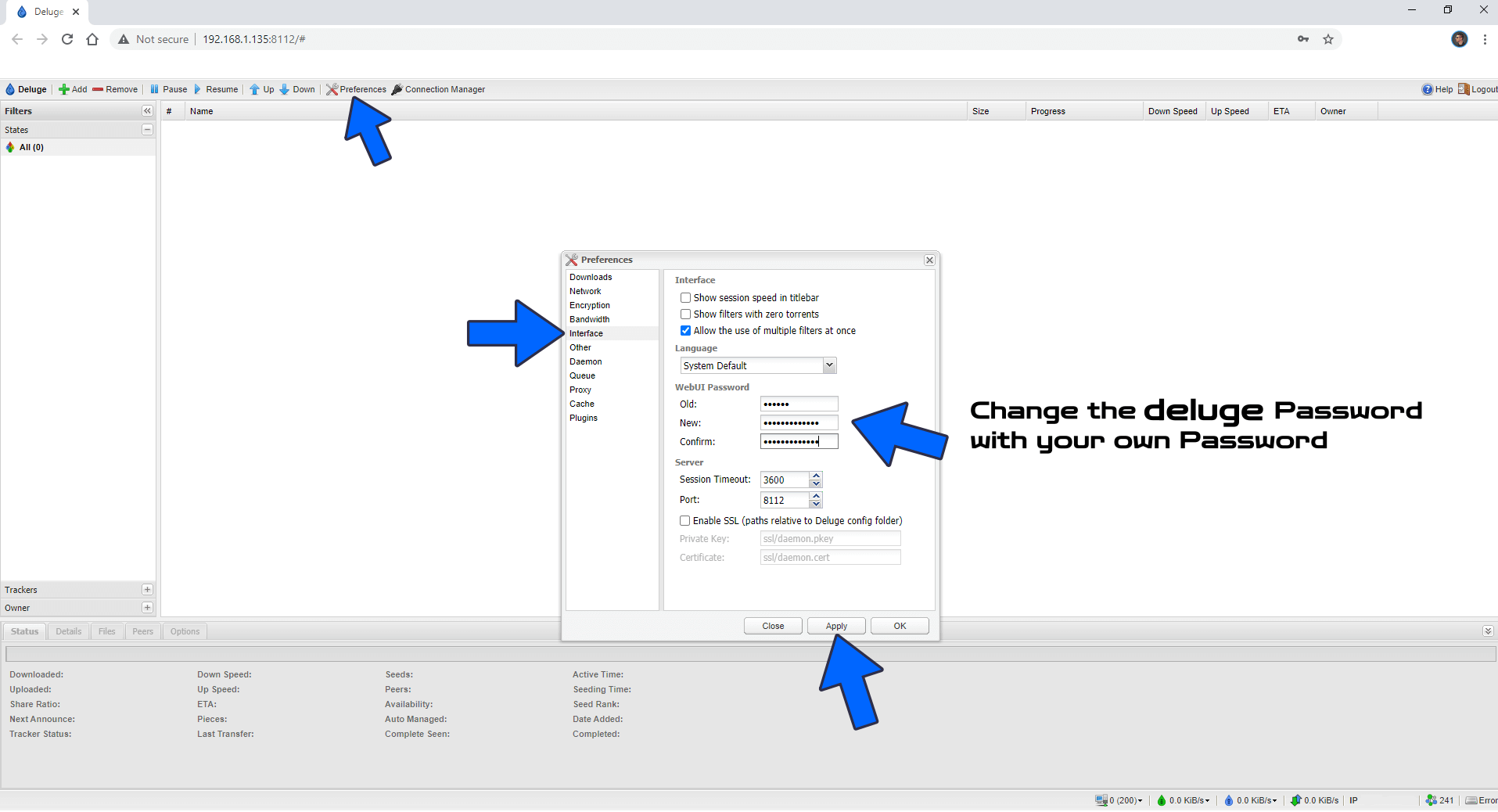
STEP 11
After your password is successfully changed click OK. Follow the instructions in the image below.

STEP 12
Go to Preferences / Downloads and add your own download folder you have previously set at STEP 5 then click Apply. Follow the instructions in the image below.
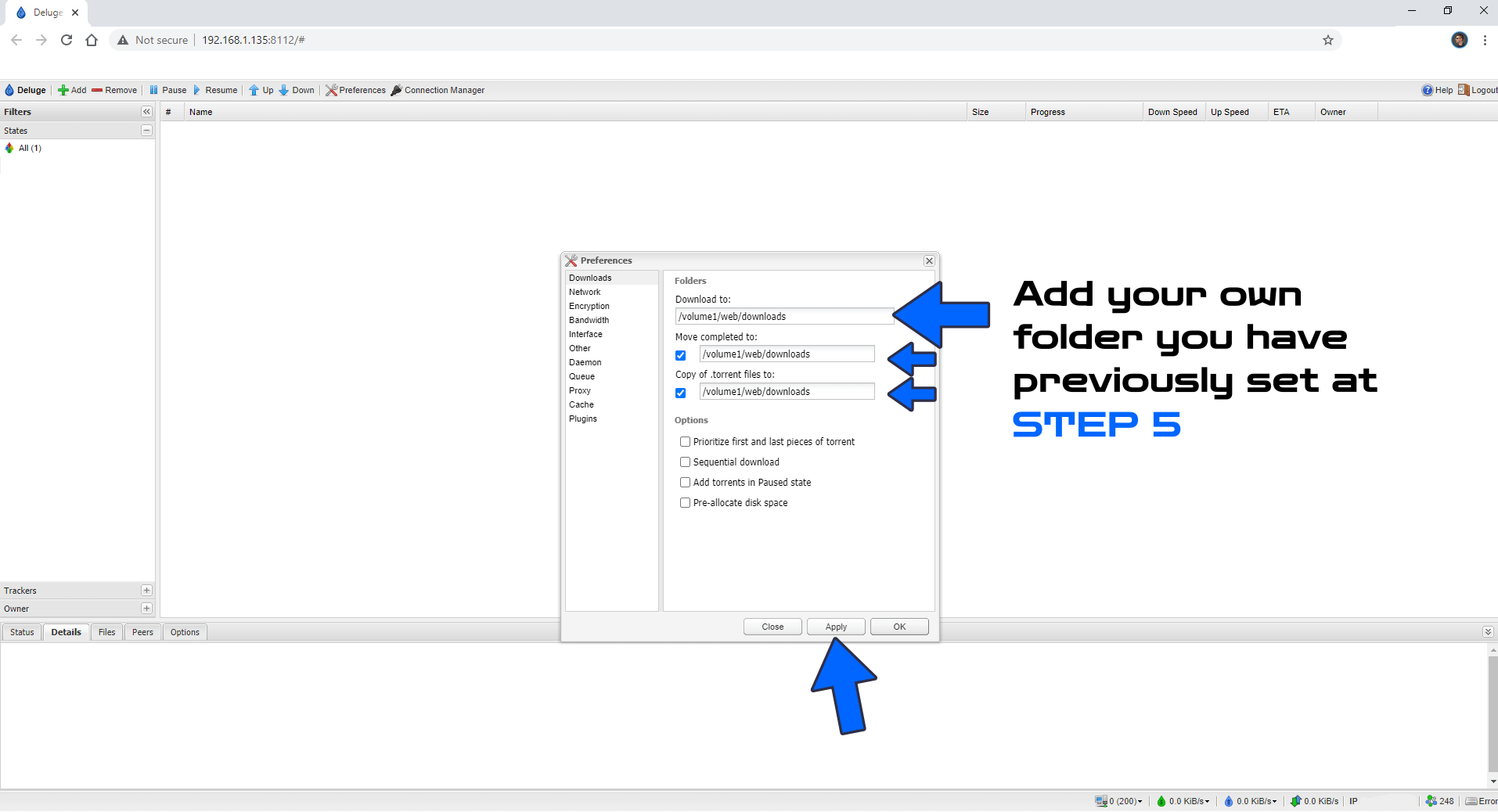
STEP 13
Click Connection Manager. A new pop-up will open Click Connect. Follow the instructions in the image below.
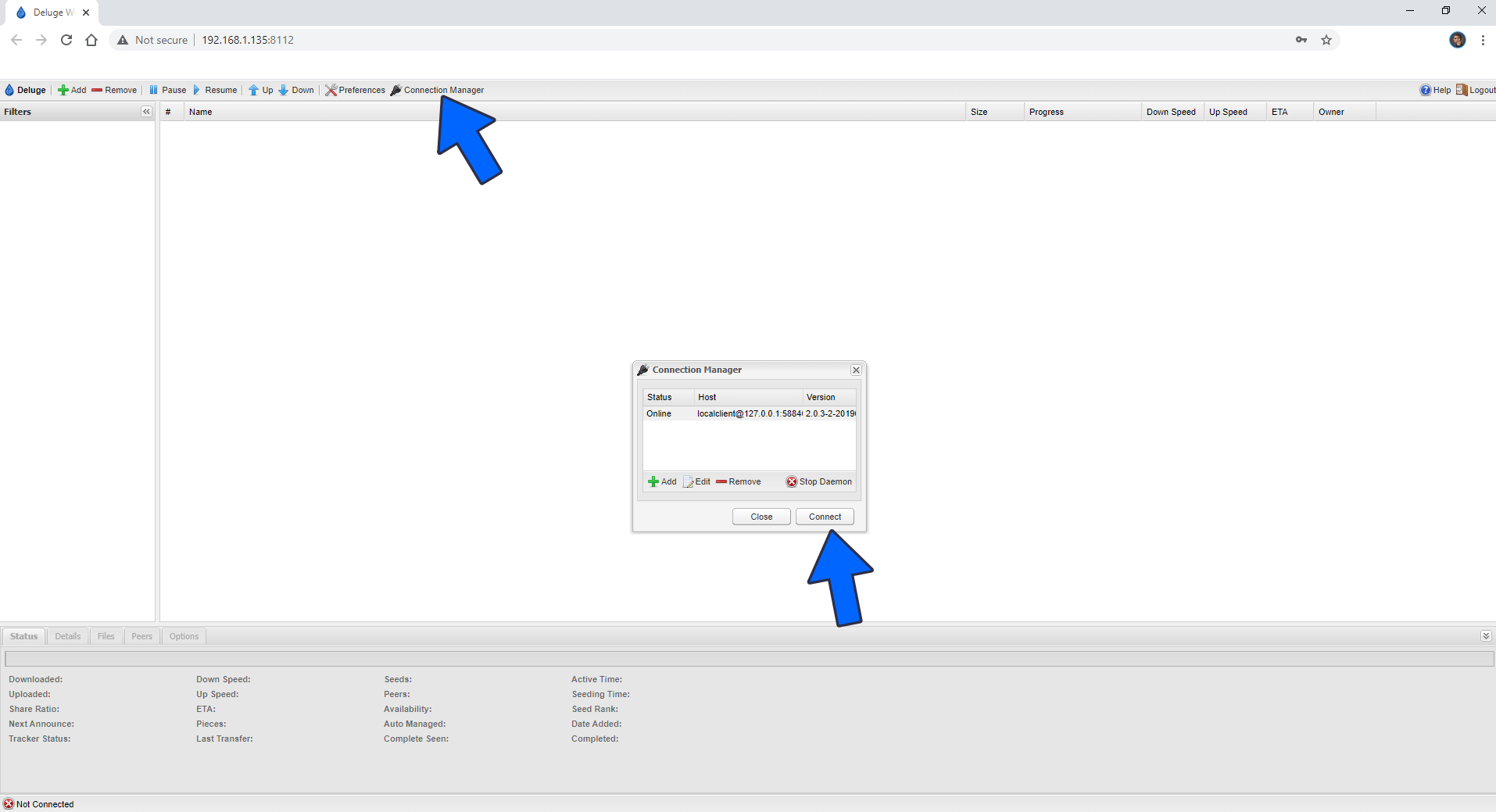
STEP 14
Start to add your torrent file URL and enjoy Deluge!

Note: If you want to run the Deluge container over HTTPS check How to Run Docker Containers Over HTTPS.
Note: Can I run Docker on my Synology NAS? See the supported models.
Note: How to Back Up Docker Containers on your Synology NAS.
Note: Find out how to update Deluge container with the latest image.
Note: How to Free Disk Space on Your NAS if You Run Docker.
Note: You can use Deluge together with Flood for a better user experience.
Note: How to Schedule Start & Stop For Docker Containers.
Note: How to Activate Email Notifications.
Note: How to Add Access Control Profile on Your NAS.
Note: How to Change Docker Containers Restart Policy.
Note: How to Use Docker Containers With VPN.
Note: Convert Docker Run Into Docker Compose.
Note: How to Clean Docker.
Note: How to Clean Docker Automatically.
Note: Best Practices When Using Docker and DDNS.
Note: Some Docker Containers Need WebSocket.
Note: Find out the Best NAS Models For Docker.
Note: Activate Gmail SMTP For Docker Containers.
This post was updated on Sunday / January 26th, 2025 at 9:24 AM
